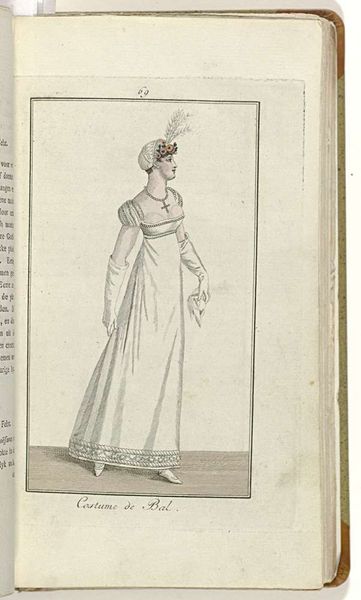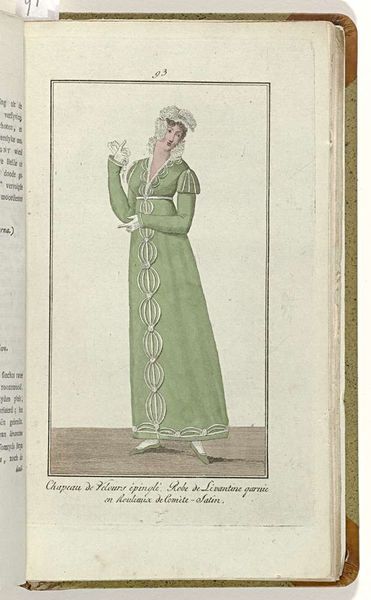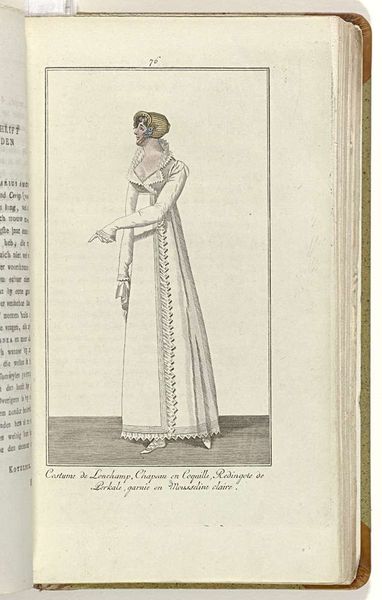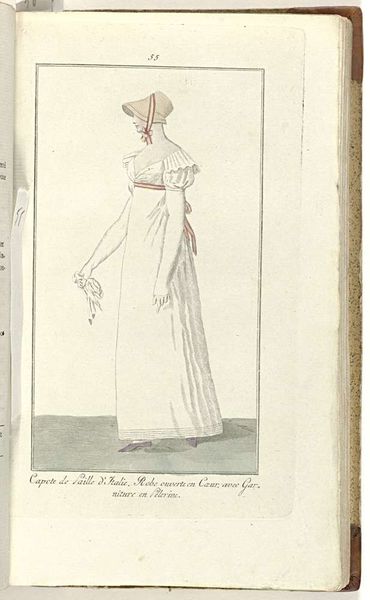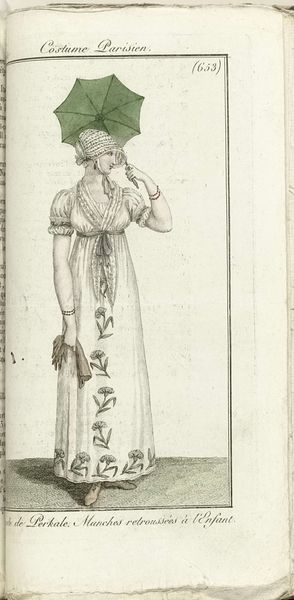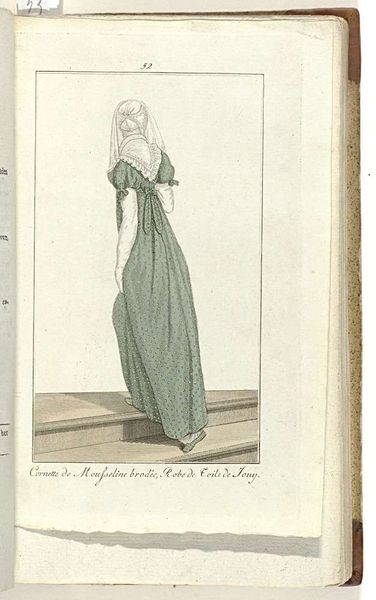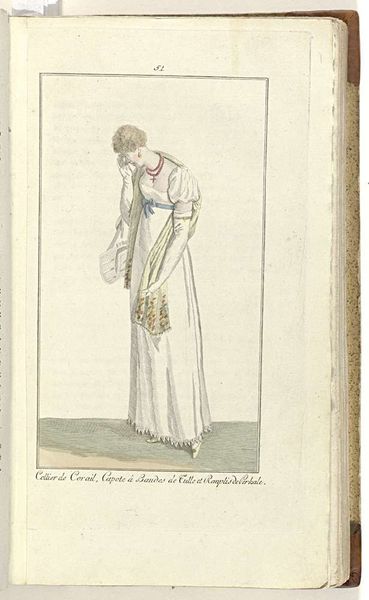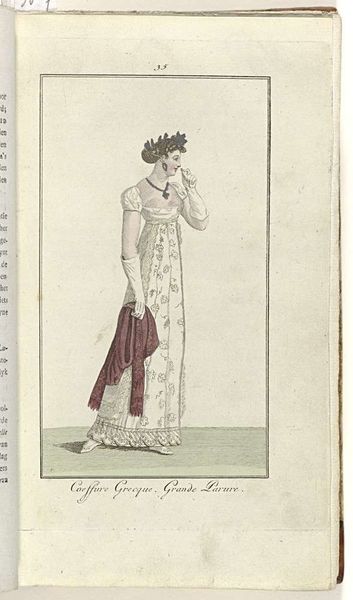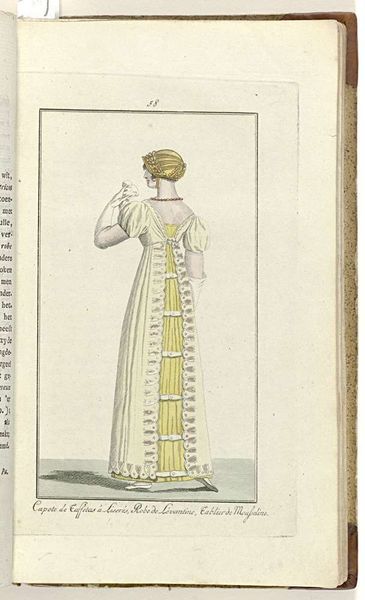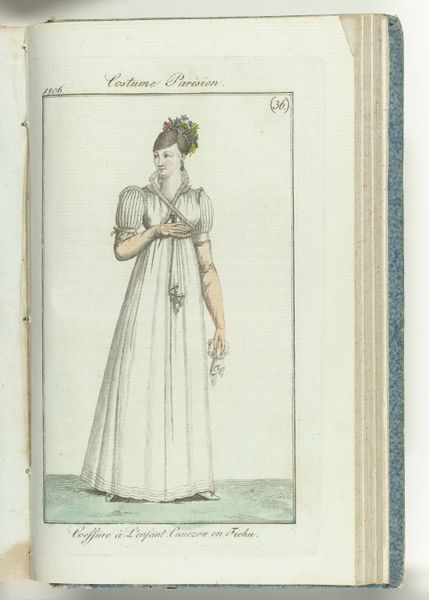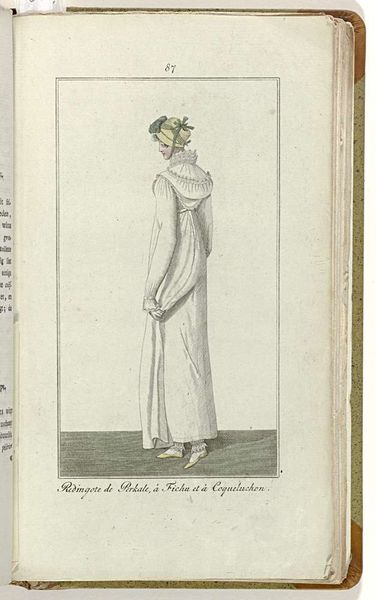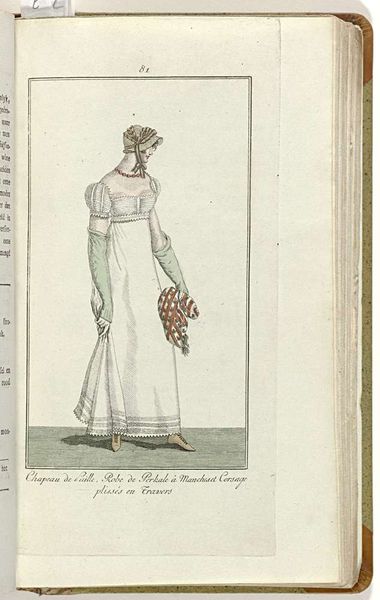
Elegantia, of tijdschrift van mode, luxe en smaak voor dames, April 1809, No. 75: Oiseau de Paradis... 1809
0:00
0:00
watercolor
#
portrait
#
figuration
#
watercolor
#
romanticism
#
watercolour illustration
#
fashion sketch
#
dress
Dimensions: height 220 mm, width 126 mm
Copyright: Rijks Museum: Open Domain
Editor: This is a watercolor illustration from 1809, "Elegantia, of tijdschrift van mode, luxe en smaak voor dames, April 1809, No. 75: Oiseau de Paradis..." It depicts a woman in a fashionable blue dress of the time, complete with gloves and a feathered headpiece. I am immediately struck by the idealization of the female form. What does this artwork tell us about the social history of fashion at that time? Curator: It reflects the evolving role of fashion periodicals in shaping and disseminating ideals of femininity and class aspirations in early 19th-century European society. These images, seemingly innocent fashion plates, were powerful tools in constructing and reinforcing social hierarchies. Editor: In what way? Curator: Consider the title, referencing "luxe en smaak," luxury and taste. Who had access to these periodicals, and therefore, this carefully curated image of "elegance"? Who was being excluded, or, conversely, included by adhering to such images? What about the gaze of the woman depicted? Does it seem inviting? Indifferent? Critical, even? These visual cues communicate more than just clothing styles; they speak to an exclusive social performance. Editor: That makes perfect sense. So it’s not just about what people wore, but about communicating one’s place within society? Curator: Exactly. Furthermore, consider how the periodical itself functions within a nascent consumer culture. It is both reflecting *and* driving demand for specific textiles, silhouettes, and accessories. In other words, influencing not just style, but economics, too. What role did the museums have to display artworks such as this? Editor: I never considered that aspect of it! Thanks, that helps contextualize this piece beyond just a pretty picture. It definitely provides a fascinating peek into the political landscape of fashion. Curator: Indeed. It shows how seemingly trivial elements like fashion become vital sources for understanding historical dynamics of class, gender, and cultural capital.
Comments
No comments
Be the first to comment and join the conversation on the ultimate creative platform.
